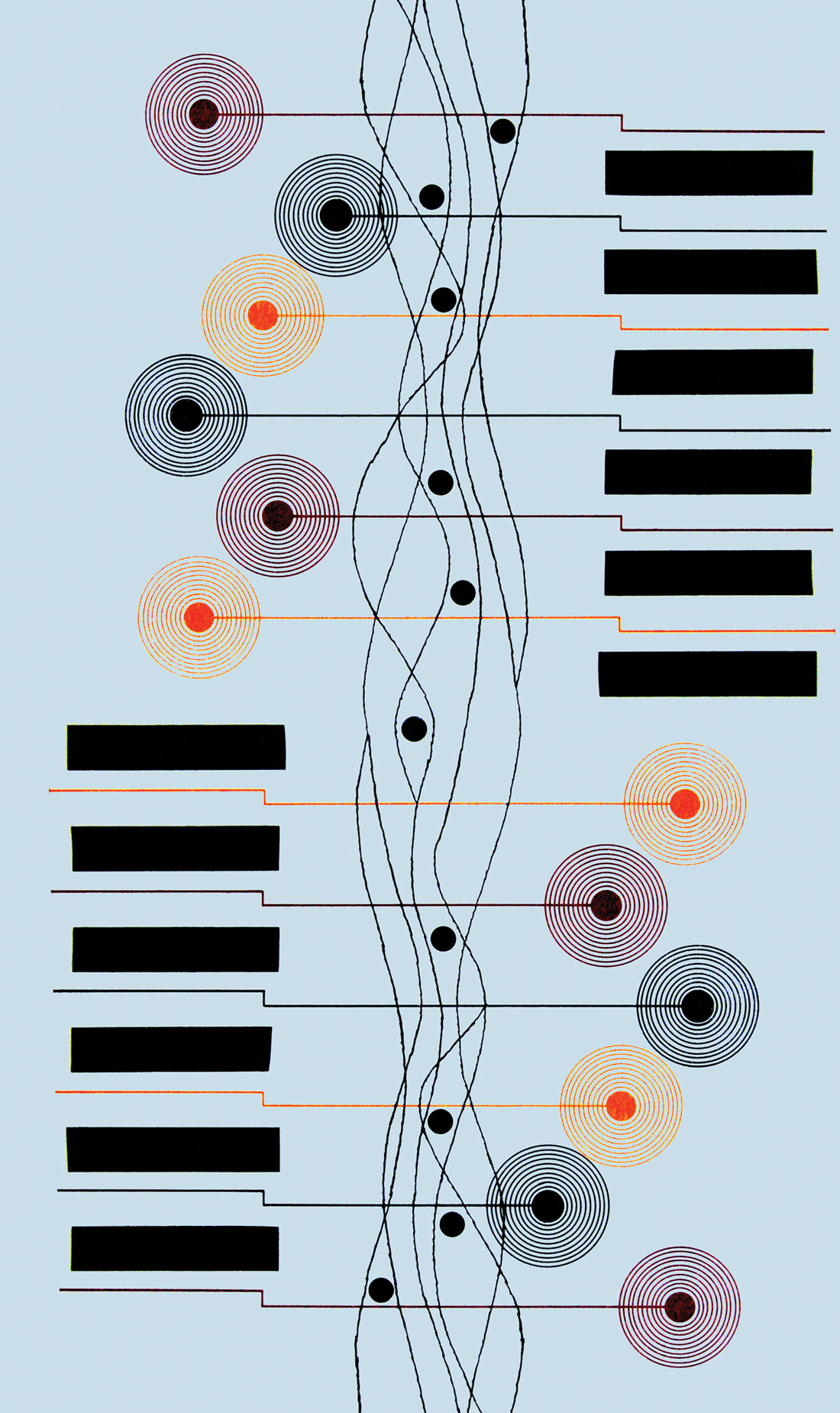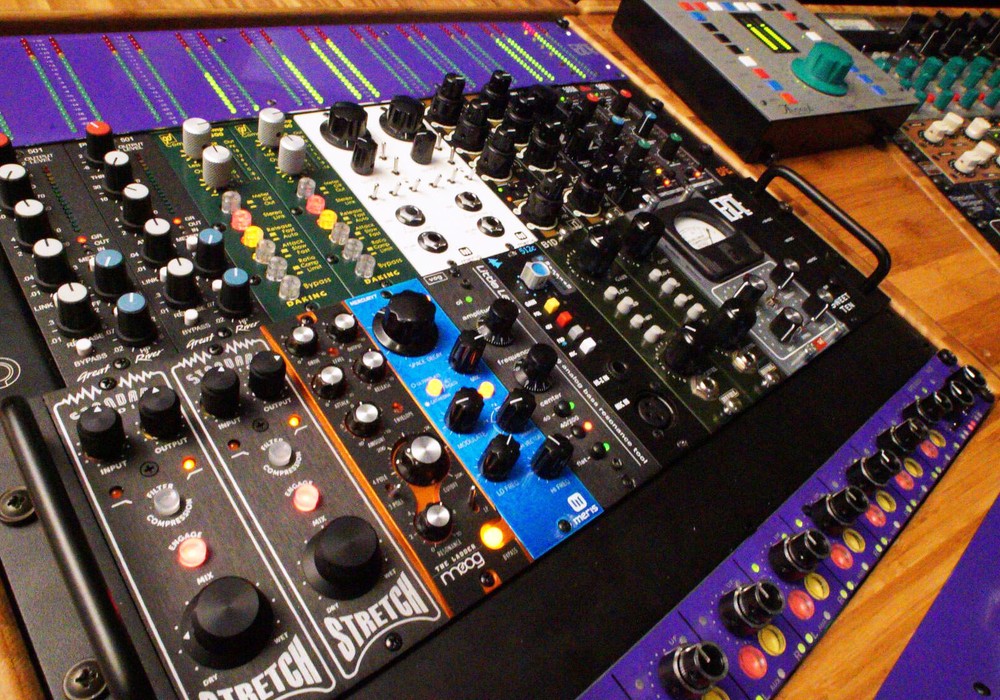In the land of DAWs, we have become obsessed with infusing some analog-ness back into our productions. Obviously, we still require some analog gear to record acoustic sources, but the search has been on for the best console, summing amp, transformer saturation, or whatever the magic pill is that adds just the right spice of non-linear distortion, or euphonic coloration. To me, the right analog processing can help my DAW mixes sound more finished, or just sit better. I am totally happy with my DAW for EQ, compression, effects, and soundstage, but I do have a handful of analog processors (mainly compressors with tubes, transformers and electro-optical elements) that color the audio in a way that I can't yet find in any plugins. I have been looking for a summing amp or stereo bus processor that adds some mojo to my mixes, and I have had the opportunity to review and audition many processors, including tube and discrete summing amps as well as various stereo processors containing transformers, compressors, and every flavor of harmonic saturation. Along my path, I came across the Manley 16x2 tube mixer, and I have to say that this just might be the most useful piece of audio gear out there, competing with everything from summing amps to full-scale mixing consoles.
The 16x2 comes in a few standard configurations, and custom ones are also available. For my use, I had the version with 16 mic preamps. This mixer is basically a 16-input, discrete, solid-state console with a tube stereo bus and monitor controller, so this unit could replace an entire studio console, except for the headphone cue system. In my situation, the room in which I was working needed additional preamps and a summing box to augment the Avid ICON control surface already in the room. At first, I thought a rack of preamps and a summing mixer would do the trick, although the cost for both started to seem prohibitive. After some research, I found that the Manley mixer with the mic preamps could be used equally well as line inputs, and the tube stereo bus would be a great flavor for summing. I didn't necessarily need the control room functions in a summing amp, but having true VU metering and the ability to use this mixer as a standalone console certainly upped the ante.
The 16x2 is typically beefy Manley and can be used as a tabletop unit, or rackmounted in five rackspaces, plus some breathing room and the external power supply. All audio connections are XLR and 1/4'', with no D-sub or multi-pin schemes to worry about. Input connectors are combination XLR and 1/4'' connectors, while the inserts and direct outs are 1/4'' connectors. The 16 mixer inputs can handle balanced or unbalanced line inputs up to +30 dBu (which is way hotter than almost any D/A converter or analog processor can output) as well as mic inputs with up to 60 dB of preamp gain (in 5 dB steps) and another 10 dB of gain at the channel fader. Phantom power, polarity reverse, panning, mute, and solo switching are provided, along with inserts and direct outs for every channel. The mic preamps are Manley quality and employ Burr- Brown chips, while the stereo summing section uses GE 12AT7 WA tubes with audiophile capacitors for the unbalanced output and Manley's own transformer for the balanced output. Very high quality Grayhill and Bourns switches are used throughout the unit.
The monitor section of this mini-console features two large VU meters for the stereo bus; stereo master fader; monitor level control; monitor selector switch for two sets of speakers; mute and dim switches; and a source selector for the monitor section. The stereo source selector lets you choose between monitoring the mixer's output in stereo or mono, as well as two additional stereo inputs for CD players, tape decks, or other inputs that don't need to go into the stereo mix. By using the EXT input, two or more mixers can be cascaded to allow for 32 channels of mixing, and Manley even allows for solo functions to be linked between the mixers.
This unit sports the familiar Manley engraved aluminum front panel, external power supply, and military-grade switches and connectors. This piece of gear is built entirely in the Chino, California factory, and everything about this mixer screams top quality. True relays are used for mute and solo functions, and the audio specs beat out almost any console you can think of - at any price.
Now, how does the thing sound? First, the mic preamps sound great. During several months, I tracked just about everything you can think of using the mic preamps through the channel direct outputs. Tons of headroom and gain coupled with great sounding components yielded big sounds, just as you'd expect from Class A preamps. The 16x2 worked extremely well as a set of preamps for a live recording rig, with the output of the recorder returning to the monitor section for confidence monitoring. As a summing amp, the mixer sounds terrific. I wouldn't classify the mixer as sounding tubey, but I would describe it as solid, extremely detailed, and the tubes and transformer add only a slight, but well mannered, saturation or compression to a full mix. The overall feeling of the summing bus is exactly what I had hoped for - just a touch of added polish to a mix that I was already happy with. The best way to describe it is that a mix that sounds great in the box sounds just a bit more finished, solid, and balanced when summed though the Manley. The vocals sit a little better, and the low end becomes a bit more solid. I never felt like any tonal color was added or anything was lost through the mixer, as is sometimes the case when I spread a DAW mix onto a large-format console.
Since the Manley is all analog and the faders and pans are not detented, I found it best to calibrate the channel faders and master fader to my Pro Tools rig each day, just to make sure that the gain settings were consistent. All the rotary knobs are comfortably sized and spaced and can easily be adjusted to a tenth of a dB, verified by the onboard VU meters and the DAW input. As long as the faders were calibrated for each session, the recall of mixes through the 16x2 always seemed right on. It should be noted that the mixer's levels didn't seem to drift from day- to-day, but the room is used by many people, and I calibrated each time I used the mixer to be sure I was consistent.
The street price of the Manley 16x2 with 16 mic preamps is just under $9000, and while the cost might seem a bit high at first glance, when you add up the value of the great preamps, a mixer with real control-room monitoring, and the quality of components and build, the value of this 16x2 is unmatched. Manley offers the 16x2 with line inputs, mic inputs, or a combination of line/mic, and each configuration has slightly different features, so check out their website and see which configuration might best fit your needs. ($9000 MSRP and up; www.manley.com)
-Adam Kagan <about.me/adamkagan>





_disp_horizontal_bw.jpg)